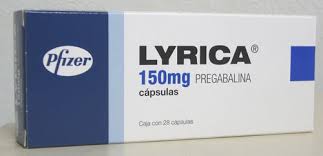Introduction
Lyrica (pregabalin) 150 mg is a potent medication widely utilized in the treatment of chronic pain conditions, neuropathic pain, fibromyalgia, generalized anxiety disorder (GAD), and as an adjunctive therapy for partial-onset seizures in epilepsy. This comprehensive essay delves into the pharmacology, therapeutic uses, dosing, side effects, and clinical considerations of Lyrica 150 mg, illustrating how it can significantly enhance the quality of life for individuals suffering from these debilitating conditions.
Pharmacological Properties
Mechanism of Action
Pregabalin, the active ingredient in Lyrica, is a GABA analog but does not function as a GABA agonist. Instead, it binds to the alpha-2-delta subunit of voltage-gated calcium channels in the central nervous system (CNS). This binding reduces calcium influx into nerve terminals, thereby inhibiting the release of excitatory neurotransmitters such as glutamate, norepinephrine, and substance P, which play key roles in pain transmission and seizure activity.
-
Calcium Channel Modulation: The reduction in calcium influx diminishes the release of neurotransmitters, leading to decreased neuronal excitability and synaptic transmission. This mechanism is pivotal in pregabalin’s analgesic and anticonvulsant properties.
-
Neurotransmitter Release Inhibition: By inhibiting neurotransmitter release, pregabalin helps alleviate pain and prevent seizures. This action also contributes to its anxiolytic effects, making it useful in treating generalized anxiety disorder.
-
Neuroprotective Effects: The modulation of calcium channels can provide neuroprotective benefits, reducing neuronal damage and promoting neural recovery in conditions involving chronic pain and nerve injury.
Therapeutic Applications
Lyrica 150 mg is prescribed for a range of conditions characterized by chronic pain and neurological disturbances. Its therapeutic applications include:
-
Neuropathic Pain: Lyrica is effective in managing neuropathic pain conditions such as diabetic neuropathy, postherpetic neuralgia, and pain from spinal cord injury. By modulating neurotransmitter release, it alleviates pain and enhances the quality of life for patients suffering from these conditions.
-
Fibromyalgia: This chronic condition is marked by widespread musculoskeletal pain, fatigue, and tender points. Lyrica reduces pain, improves sleep quality, and enhances overall functioning in patients with fibromyalgia.
-
Generalized Anxiety Disorder (GAD): In some regions, Lyrica is approved for the treatment of GAD. Its anxiolytic effects are due to its ability to decrease excitatory neurotransmitter release, thereby reducing anxiety symptoms.
-
Epilepsy: Lyrica is used as an adjunctive therapy for partial-onset seizures in patients with epilepsy. By reducing neuronal excitability, it helps control seizure activity in patients who are not adequately managed with other anticonvulsants.
Dosage Recommendations
Lyrica 150 mg
Lyrica 150 mg is a commonly prescribed dose for several conditions, with dosage adjustments made based on patient response and tolerance.
-
Neuropathic Pain: The typical starting dose for neuropathic pain is 150 mg per day, divided into two or three doses. Depending on the patient’s response and tolerability, the dose can be increased to a maximum of 600 mg per day.
-
Fibromyalgia: For fibromyalgia, the initial dose is 75 mg twice daily, which may be increased to 150 mg twice daily. If needed, the dose can be further increased to a maximum of 300 mg twice daily, based on efficacy and tolerability.
-
Generalized Anxiety Disorder: The starting dose for GAD is often 75 mg twice daily, with the potential to increase to 150 mg twice daily based on clinical response. The maximum recommended dose for GAD is 450 mg per day.
-
Epilepsy: As an adjunctive therapy for partial-onset seizures, the starting dose is typically 150 mg per day, which can be increased based on clinical response to a maximum of 600 mg per day.
Pharmacokinetics
Understanding the pharmacokinetics of pregabalin is crucial for optimizing its therapeutic use and minimizing adverse effects.
-
Absorption: Pregabalin is rapidly absorbed with an oral bioavailability of ≥90%, reaching peak plasma concentrations within 1 hour of ingestion. Food does not significantly affect its absorption, allowing for flexible dosing schedules.
-
Distribution: Pregabalin is widely distributed in the body and does not significantly bind to plasma proteins, facilitating its therapeutic effects.
-
Metabolism: Pregabalin undergoes negligible hepatic metabolism, which reduces the risk of drug-drug interactions and makes it suitable for patients with hepatic impairment.
-
Excretion: Pregabalin is primarily excreted unchanged in the urine, with a half-life of approximately 6.3 hours. Dose adjustments are necessary for patients with renal impairment to prevent accumulation and toxicity.
Potential Side Effects
While Lyrica 150 mg is effective for managing various conditions, it is associated with several side effects that patients and healthcare providers should monitor.
-
Common Side Effects: Frequently reported side effects include dizziness, somnolence, dry mouth, edema, blurred vision, weight gain, and difficulty with concentration. These side effects are generally dose-dependent and may diminish with continued use.
-
Serious Adverse Effects: Serious adverse effects can include angioedema, hypersensitivity reactions, and an increased risk of suicidal thoughts or behavior. Monitoring for these effects is particularly important during the initial treatment period.
-
Drug Interactions: Pregabalin can interact with other CNS depressants, such as opioids and benzodiazepines, increasing the risk of sedation and respiratory depression. A thorough review of the patient’s medications is essential to avoid potential interactions.
-
Contraindications: Lyrica is contraindicated in patients with known hypersensitivity to pregabalin or any of its components. Caution is also advised in patients with a history of substance abuse, as pregabalin has potential for misuse and dependence.
Clinical Considerations
Several clinical considerations are essential for the safe and effective use of Lyrica 150 mg.
-
Patient Assessment: A comprehensive assessment of the patient’s medical history, current medications, and potential for substance abuse is crucial. This helps identify contraindications and risk factors for adverse effects.
-
Titration and Monitoring: Gradual titration of the dose is recommended to minimize side effects and improve tolerability. Regular monitoring for signs of misuse, dependence, and adverse effects is necessary, especially in patients requiring long-term therapy.
-
Renal Impairment: Dose adjustments are required for patients with renal impairment. The dosage should be reduced based on creatinine clearance levels to prevent accumulation and toxicity.
-
Pregnancy and Lactation: The safety of pregabalin during pregnancy and lactation has not been fully established. Pregnant or breastfeeding women should use Lyrica only if the potential benefits justify the potential risks to the fetus or infant.
-
Withdrawal and Discontinuation: Abrupt discontinuation of Lyrica can result in withdrawal symptoms, including insomnia, headache, nausea, and diarrhea. Gradual tapering of the dose is recommended to minimize withdrawal risks.
Efficacy and Patient Outcomes
Clinical trials and real-world studies have demonstrated the efficacy of Lyrica 150 mg in managing various chronic pain conditions and improving patient outcomes.
-
Neuropathic Pain: Patients with neuropathic pain conditions such as diabetic neuropathy and postherpetic neuralgia have reported significant reductions in pain scores and improvements in sleep and overall quality of life.
-
Fibromyalgia: Lyrica has shown efficacy in reducing pain intensity, improving sleep quality, and enhancing physical functioning in patients with fibromyalgia. These benefits contribute to an improved overall quality of life.
-
Generalized Anxiety Disorder: In clinical studies, Lyrica has been effective in reducing anxiety symptoms and improving daily functioning for patients with GAD. Its anxiolytic effects are comparable to those of other standard treatments.
-
Epilepsy: As an adjunctive therapy for partial-onset seizures, Lyrica has demonstrated efficacy in reducing seizure frequency and improving seizure control in patients not adequately managed with other anticonvulsants.
Conclusion
Lyrica 150 mg is a versatile and effective medication for the management of chronic pain conditions, neuropathic pain fibromyalgia, generalized anxiety disorder, and partial-onset seizures in epilepsy. Its unique mechanism of action, coupled with its proven efficacy in reducing pain and improving quality of life, makes it a valuable option for patients suffering from these conditions. However, the potential for side effects, misuse, and dependence necessitates careful patient assessment, regular monitoring, and adherence to clinical guidelines. By understanding the pharmacological properties, therapeutic applications, and clinical considerations associated with Lyrica 150 mg, healthcare providers can optimize treatment outcomes and enhance the quality of life for their patients.





